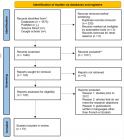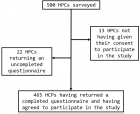Table of Contents
Artemisia Naphta: A novel oil extract for sensitive and acne prone skin
Published on: 15th June, 2021
OCLC Number/Unique Identifier: 9124793207
Background: The plant Artemisia annua has been used in traditional Chinese medicine for many years. Rich in bioactive molecules, the A. annua plant is used to extract the anti-malaria compound artemisinin (< 1%), which results in most of the plant being unutilized. One byproduct of artemisinin extraction is artemisia naphtha (AN), which has yet to be studied extensively.
Aims: Study the activity of a novel AN oil extract against microbes, pro-inflammatory cytokines, and dermatological endpoints that are key for eczema and acne pathogenesis to determine if an effective A. annua extract for these skin conditions can be developed.
Methods: Gas chromatography-mass spectrometry was performed to determine the composition of AN oil. P. acnes, S. aureus, M. furfur, and C. albicans were cultured to determine minimal inhibitory concentration. in vitro studies utilizing keratinocytes and macrophages were treated with AN oil and gene expression measured by quantitative RT-PCR. A 13-subject clinical trial was performed with 1% AN oil Gel to assess its potential benefits for sensitive and acne prone skin.
Results: AN oil upregulates filaggrin gene expression and possesses antimicrobial and anti-inflammatory activity inhibiting LPS, S. aureus and "Th2 induced" pro-inflammatory mediator release (IL-6, IL-8 and TSLP). Clinical assessment of 1% AN Gel shows it reduces acne blemishes and the appearance of redness.
Conclusion: Previously an underutilized and unpurified byproduct, AN is now the source to develop the first topical AN oil for cosmetic use with an activity profile that suggests it is effective for those with sensitive and/or acne prone skin.
Follicular psoriasis: a poorly known presentation
Published on: 12th May, 2021
OCLC Number/Unique Identifier: 9124807516
Follicular psoriasis is an uncommon diagnosis and probably the least well-known subtype of psoriasis. Hence, we report the clinical and histological findings of follicular psoriasis in one patient to raise awareness of this rare entity.
58-year-old male patient who came to the dermatology service for a clinical picture
Published on: 30th April, 2021
OCLC Number/Unique Identifier: 9028060067
58-year-old male patient who came to the dermatology service for a clinical picture consisting of generalized erythematous scaly and pruritic lesions of 2 years of evolution. The clinical judgments provided were: pityriasis versicolor, drop psoriasis, pityriasis rubra pilaris and secondary syphilis (without serology confirming this last hypothesis then). A biopsy of a lesion located on the right costal side was performed. The serology was negative in a second time.
Drug Eruptions at Patients in Consultation at the Dermatology Department of the Dermatology Teaching Hospital in Bamako, Mali: Epidemiological, Clinical and Etiological Study
Published on: 28th April, 2021
OCLC Number/Unique Identifier: 9028058489
The administration of a drug substance is an essential step in the management of a patient. It aims either to cure the patient, to prevent a given disease or sometimes to help with the diagnosis. Unfortunately, the action of the drug can go beyond the desired effect, and cause skin-mucous accidents. These accidents, also known as drug-induced attacks, can be isolated or associated with systemic manifestations [1]. Drug eruption is a real public health issue because of the high frequency. In Europe, drug eruption is responsible for about 20% of spontaneous reports of drug accidents. They complicate 2% to 3% of hospital treatments and motivate 1% of consultations, 5% of hospitalizations in dermatology [2]. Some African authors were interested in the subject. Reported prevalence in hospital settings ranges from 0.4% to 1.53% [3,4]. In Mali, there are no national figures. Old statistics from the Department of Dermatology show that about thirty cases occur each year, most of which are represented by severe forms. However, the risk of drug eruption is thought to be very high due to increased local use of drugs without medical advice, the illegal proliferation of drug outlets (‘Street Medicine’). And the lack of enforcement of existing regulations. In addition, some authors believe that the advent of antiretrovirals and the use of antiInfectious infections used to treat opportunistic infections have increased the risk of Drug eruption by 4 to 30 times, particularly in subjects infected with the acquired human immunodeficiency virus (HIV) [2]. This same risk can be observed in leprosy patients on combination chimotherapy. Clinically, the diagnosis of drug eruption is not as easy as one might think because of clinical polymorphism. The responsibility of a drug for the onset of a reaction is also not easy to establish, as in most cases several drugs are administered simultaneously before the onset of the rash. Because of illiteracy, patients find it difficult to make a complete list of the molecules consumed. To this must be added the high frequency of counterfeit medicines circulating both on the street and in private pharmacies. Given the scarcity of African studies and due to local specificities, it seemed interesting to us to undertake a study on Drug eruption in the dermatology department of the Dermatology teaching hospital of Bamako whose purpose is to study epidemiological aspects, clinical, etiological and to identify the molecules responsible in these patients.
Clinical and epidemiological differences in the course of psoriasis in children depending on Vitamin D levels and genotypes of the TaqI polymorphic variant of the VDR gene
Published on: 7th April, 2021
OCLC Number/Unique Identifier: 9018090329
When grouping children with psoriasis depending on TaqI (T/C) genotypes of the VDR gene, the youngest age of disease onset and the longest duration of dermatitis (5.60 ± 0.77 years and 4.90 ± 0.68 years, respectively) showed up in case of the CC genotype. In case of the TT genotype, disease onset coincided with an older age, and the history of present illness was the shortest (10.26 ± 0.64 years and 2.59 ± 0.58 years, respectively). PASI (20.32 ± 3.43) and BSA (40.00 ± 6.11) severity indices were the highest and of statistically significant difference to those in other groups in the presence of the CC genotype. In case of the TC genotype, the index PGA (2.80 ± 0.15) was the lowest and made a statistically significant difference to the values of other groups. A negative correlation between vitamin D levels and the PASI, PGA, BSA was identified in children holding CC and TC genotypes.
Conclusion: The clinical presentation of dermatitis and its epidemiological features in children with psoriasis, namely the age of disease onset, duration of exacerbation, body surface area and the intensity of psoriasis symptoms depend on vitamin D serum levels and genotypes of the TaqI polymorphic variant of the VDR gene.
The coral crunch: Amyloidoma
Published on: 20th January, 2021
OCLC Number/Unique Identifier: 8895645427
Amyloidoma is an exceptional, progressive disorder demonstrating a characteristic accumulation of significant quantities of amyloid within soft tissues. Amyloidoma is additionally nomenclated as tumoural amyloidosis, nodular amyloid or localized amyloidosis. Furthermore, insulin-derived amyloidoma is referred to as insulin ball. Amyloid is a protein polymer configured of identical monomeric protein units wherein pathological variety is articulated from misfolded proteins. In excess > of twenty three subtypes of proteins can configure amyloid fibres in vivo. Extra-cellular or intra-cellular deposition of amyloid can modify normal organ function [1].
Amyloidosis is categorized into systemic and localized subtypes. Localized amyloidosis displays a localized mass effect and demonstrates a superior prognosis. Insulin-derived amyloidosis was initially documented by Storkel, et al. in 1983 who recognized accumulated insulin- amyloid fibrils in diabetic individuals subjected to continuous infusion of porcine insulin over a period of 5 weeks or more [1,2]. Amyloid nodules may be associated with systemic amyloidosis.

If you are already a member of our network and need to keep track of any developments regarding a question you have already submitted, click "take me to my Query."



















































































































































